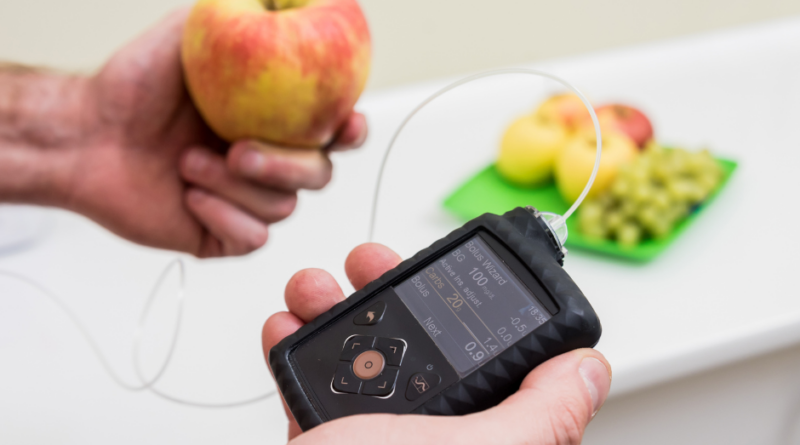Optimizing Your Insulin Intake to Achieve Better Results
Optimizing Your Insulin Intake to Achieve Better Results
An insulin pump is a treatment option for many living with type I or type II diabetes. The question is, when should you consider using this device, if any, during your diabetes journey? If you’re unfamiliar with insulin pumps, let’s review.
Insulin pumps, in a nutshell, are medical devices that administer insulin. An insulin pump usually consists of the pump, the reservoir, and an infusion set. Pumps are used as an alternative for insulin delivery. Many people living with diabetes who take insulin opt for an insulin pump. This eliminates the usage of multiple daily injections via syringe or pen. Many insulin pumps work in conjunction with continuous glucose monitoring. This automates the process of keeping your A1C in range and the management of your insulin-to-carb ratio[1]. It’s always best practice to speak with your provider when thinking of incorporating new products into your diabetes self-management regimen.
Choices
An insulin pump may be a great choice for those dealing with multiple daily injections. Sometimes it’s hard to keep track of insulin injections, which makes these great options for children or older adults. Pumps may be a better alternative to injections as it’s sometimes difficult to stick to a schedule. Also, using an insulin pump will give you less chance of developing hypoglycemia because insulin is released before and during meals.A1C greater than 7%, you may want to speak to your provider and diabetes care team about an insulin pump system.
A pump is something to consider if you have frequent low blood sugar reactions. This will keep your blood sugar in check and the pump tends to be more accurate than shots. Many pumps have an option where they can extend insulin dosage over 2 – 3 hours. This is called “extended bolus” and is a wonderful option for those who deal with hypoglycemia or low blood sugar. Many insulin pumps have a bolus calculator which can determine insulin doses for you.
If you’re an active person or exercise frequently, you may want to choose an insulin pump over insulin injections. With an insulin pump, you can modify basal rates to avoid blood sugar highs and lows. Remember the pump only uses shorter acting insulin. If the insulin pump breaks or falls off, you will need to be ready to give insulin by injection.
An insulin pump may be initiated if you are dealing with gastroparesis[2]. Gastroparesis is a condition where there are delays in the absorption of food from the stomach. This can affect glycemic control and insulin requirements. When choosing a pump, you would want to look at one that has extended bolus or square-wave bolus features.
If you are a type I, type II, or woman with gestational diabetes, you may want to initiate the use of an insulin pump. This will ensure the strict blood glucose control necessary when pregnant. It’s important to know your blood glucose levels, but with an insulin pump, you can distribute the doses needed for a healthy pregnancy.
Taking a Break
Sometimes people take a break from wearing an insulin pump due to device fatigue or to give their infusion site time to recover. This is perfectly fine and it’s okay to do this from time to time. By using an insulin pump, you have options to go back to injections depending on your lifestyle needs and then change back to the insulin pump when you want to.
Coverage
Many insurance plans cover insulin pumps, but you may want to inquire about the coverage amounts allotted and the guidelines for coverage. Some plans may only cover certain pumps and if you have a high deductible you may have to pay a chunk of the cost. Also, this item is a durable medical equipment product and may be covered under a special section of your insurance plan. It’s worth looking into if you and your provider feel an insulin pump is the right fit for you. Some plans will have requirements to meet for coverage, such as:
1) Testing your blood glucose levels at a minimum of 3-4 times per day.
2) Injecting insulin at a minimum of 3-4 times per day.
3) Pre-authorization, letter of medical necessity, labs, and/or logs
4) New pump coverage every 4-5 years
It’s good to keep an open mind and be educated on the products and resources available to a person living with diabetes. As always, speak with your provider and diabetes care team to see what products are in the market to make your healthcare journey more pleasant. Insulin pumps are life-saving medical devices that give you many benefits and are a product that should be considered in your diabetes toolbox.
[1] https://diabetes.org/healthy-living/recipes-nutrition/understanding-carbs/carb-counting-and-diabetes
[2] https://www.diabetesselfmanagement.com/managing-diabetes/complications-prevention/treating-gastroparesis/




